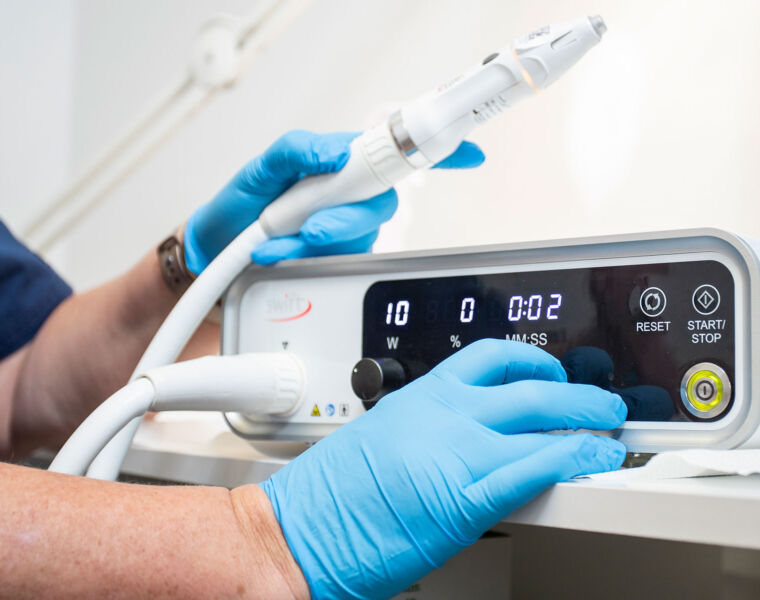
In light of recent news of King Charles III’s hospital attendance for the treatment of enlarged prostate, we ask Consultant Urologist Mr Hamid Abboudi of New Victoria Hospital more about the condition and the types of treatment available.
According to statistics, 1 in 3 men over the age of 50 will develop symptoms associated with an enlarged prostate, medically known as Benign Prostatic Hyperplasia (BPH).
The condition is believed to be linked to hormonal changes as men age. Common indicators of the condition include the sudden urge to urinate, a straining or painful sensation when urinating, feeling that the bladder is not completely empty, and getting up more than once at night to urinate.
The symptoms are often mild, but the severity can impair quality of life, and research suggests that men with moderate or severe symptoms have an increased risk of serious heart conditions, such as stroke and cardiac death.
We asked Mr Abboudi a series of questions about the types of treatment that HRH King Charles III could have used.

LM: At what age can BPH start?
HA: As men get older, the prostate increases in size. Enlarged prostate, also referred to as Benign Prostatic Hyperplasia (BPH), is a process linked to ageing that starts when men are 25 years old.
Some men don’t experience symptoms. However, for those who do, the symptoms can start as early as in their 40s, but typically, it is more common in men in their 60s, 70s, and 80s.
It is estimated that 50% of men between the ages of 51 and 60 and up to 90% of men over the age of 80 present BPH, with 3 million men having troublesome urinary tract conditions associated with BPH in the UK.
LM: What are the most common symptoms?
HA: An enlarged prostate can cause an obstruction to the bladder and symptoms such as:
- Difficulty starting to urinate
- Weaker flow
- Dribbling at the end of urination
- The feeling of incomplete bladder emptying
- Needing to go to the toilet more often, having to rush and losing control
- Waking up at night to urinate
Sometimes, the prostate becomes so enlarged that the bladder does not empty at all – this is termed urinary retention (complete blockage). This can be extremely painful. Therefore, the immediate treatment for urinary retention is to fit a plastic tube (urinary catheter) into the bladder to drain the blocked urine.
LM: What are the typical treatment options for BPH?
HA: Mild symptoms might not necessarily require treatment. Active surveillance, with yearly check-ups, might be the best option.
Drug Therapies
Therapies with Alpha Blockers to relax the prostate muscles, 5- Alpha Reductase Inhibitors to increase urine flow, or combined therapies might help reduce symptoms, but they might have side effects such as erectile dysfunction and reduced sex drive.
Enlarged Prostate Surgery
When medications stop working, there are a number of traditional and new surgical techniques for treating an enlarged prostate, such as:
- Transurethral resection of the prostate (TURP)
- Urolift (implants)
- Rezum (steam, water vapour therapy)
- Holmium laser enucleation of the prostate (HoLEP)
The Benefits of HoLEP
Holmium Laser Enucleation of the Prostate is an alternative to conventional transurethral resection of the prostate for the treatment of bladder outflow obstruction.
LM: How does HoLEP work?
HA: This technique uses the unique property of laser to remove a large amount of the blocking part of the prostate whilst closing up any blood vessels along the way. This means that HoLEP has a much lower rate of blood transfusion, shorter length of hospital stay, shorter time to wear a catheter and better long-term outcomes than any other prostate procedure.
Whilst Urolift and Rezum are less invasive techniques and, therefore, have less effect on ejaculation, they are not licenced for use in extremely large prostates -only up to 80 grams -or in men with a urinary catheter.
HoLEP can be used to treat any size prostate but has its greatest advantage when used to treat men with very large prostates, i.e. those more than 80 grams. It is also the most effective technique in treating men who have gone into urinary retention and who are now wearing a catheter. Some of the main HoLEP advantages are:
- Reduced risk of bleeding
- Increased precision with prostate removal
- It tends to be more durable in the long term, and the risk of requiring a repeat procedure at a later stage is much less as more of the central part of the prostate is removed compared to other operations
LM: Will sexual and urinary functions be affected after surgery?
HA: Some men are concerned about the effect on erections, ejaculation and urinary continence. These are all important factors that need to be discussed in great detail with your urologist.
The most important consideration when choosing between the range of prostate surgery options is identifying what is the most important outcome for the patient. There are always trade-offs between sexual function preservation, improvements in symptoms and choosing a treatment which will last a long time.

![]()




You must be logged in to post a comment.